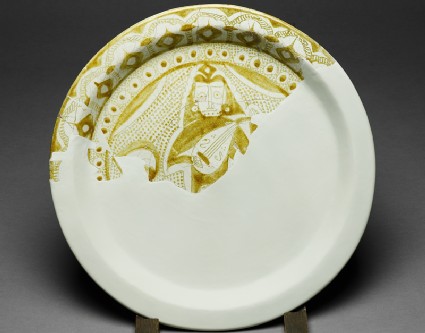Browse: 18 objects
- Reference URL
Actions
Fragmentary dish with figure of a musician
-
Details
- Associated place
- Date
-
10th century (AD 901 - 1000)
Abbasid Period (AD 750 - 1258)
- Material and technique
- earthenware, with painting in lustre over an opaque white glaze
- Dimensions
-
3.4 cm (height)
37 cm (diameter)
- Material index
- Technique index
- Object type index
- No. of items
- 1
- Credit line
- Gift of Gerald Reitlinger, 1978.
- Accession no.
- EA1978.2146
-
Further reading
Raby, Julian, ‘Looking for Silver in Clay: A New Perspective on Samanid Ceramics’, M. Vickers, ed., Pots and Pans: A Colloquium on Precious Metals and Ceramics in the Muslim, Chinese and Graeco-Roman Worlds, Oxford 1985, Oxford Studies in Islamic Art, 3 (Oxford: Oxford University Press, 1986), pp. 181-182, illus. p. 187 fig. 9
Glossary (3)
earthenware, glaze, lustre
-
earthenware
Ceramic material made of clay which is fired to a temperature of c.1000-1200⁰c. The resulting ceramic is non-vitreous and varies in colour from dark red to yellow.
-
glaze
Vitreous coating applied to the surface of a ceramic to make it impermeable or for decorative effect.
-
lustre
Metallic sheen obtained by applying a mixture of metallic oxides onto an already glazed ceramic that is refired at a reduced atmosphere.
Location
Objects are sometimes moved to a different location. Our object location data is usually updated on a monthly basis. Contact the Jameel Study Centre if you are planning to visit the museum to see a particular object on display, or would like to arrange an appointment to see an object in our reserve collections.
Galleries
© 2013 University of Oxford - Ashmolean Museum






